Abstract
The control of blood pressure, heart rate, cardiac output and systemic vascular resistance by the carotid sinus baroreceptor reflex was studied in six conscious rabbits during states of acute hypervolaemia and acute hypovolaemia. These states were produced by infusing blood equal to 20% and 40%, and withdrawing blood equal to 20% and 35%, of the initial blood volume. The properties of the reflex were characterized by creating sinusoidal pressure changes across the wall of the carotid sinus at a frequency of 0.01 Hz and amplitudes of 54 and 83 mmHg. From the effects of the lower-amplitude stimulus the dynamic gain of the reflex was calculated for blood pressure, heart rate, cardiac output and systemic vascular resistance. The higher-amplitude stimulus was used to determine the near maximal responses of the circulatory variables to changes in carotid sinus transmural pressure. The gain for systemic vascular resistance was reduced by hypervolaemia, and increased by 20% hypovolaemia. The gains for heart rate and blood pressure were not affected by hypervolaemia or by 20% hypovolaemia. 35% hypovolaemia reduced the gain for heart rate, but the resting value was close to the upper limit of the reflex response. It also reduced the gain for cardiac output and blood pressure, and the increase in gain for systemic vascular resistance that had been caused by 20% hypovolaemia was not sustained.
Full text
PDF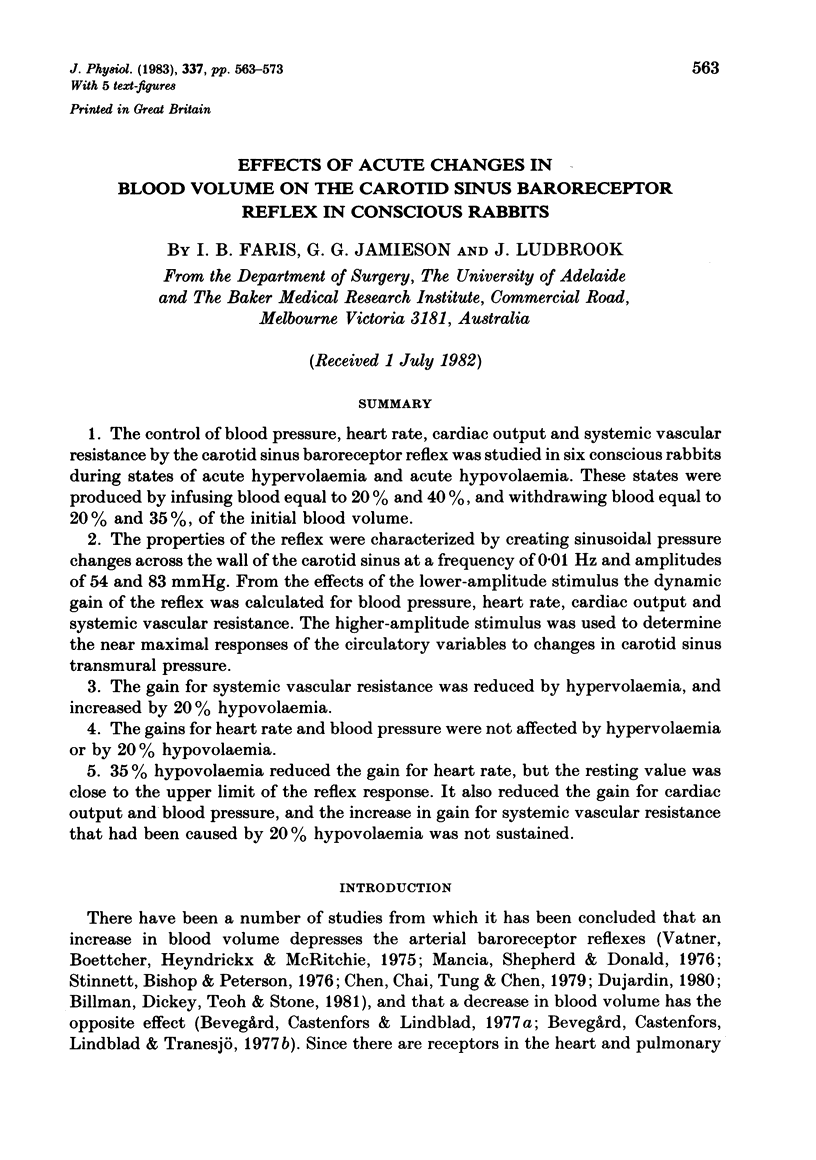

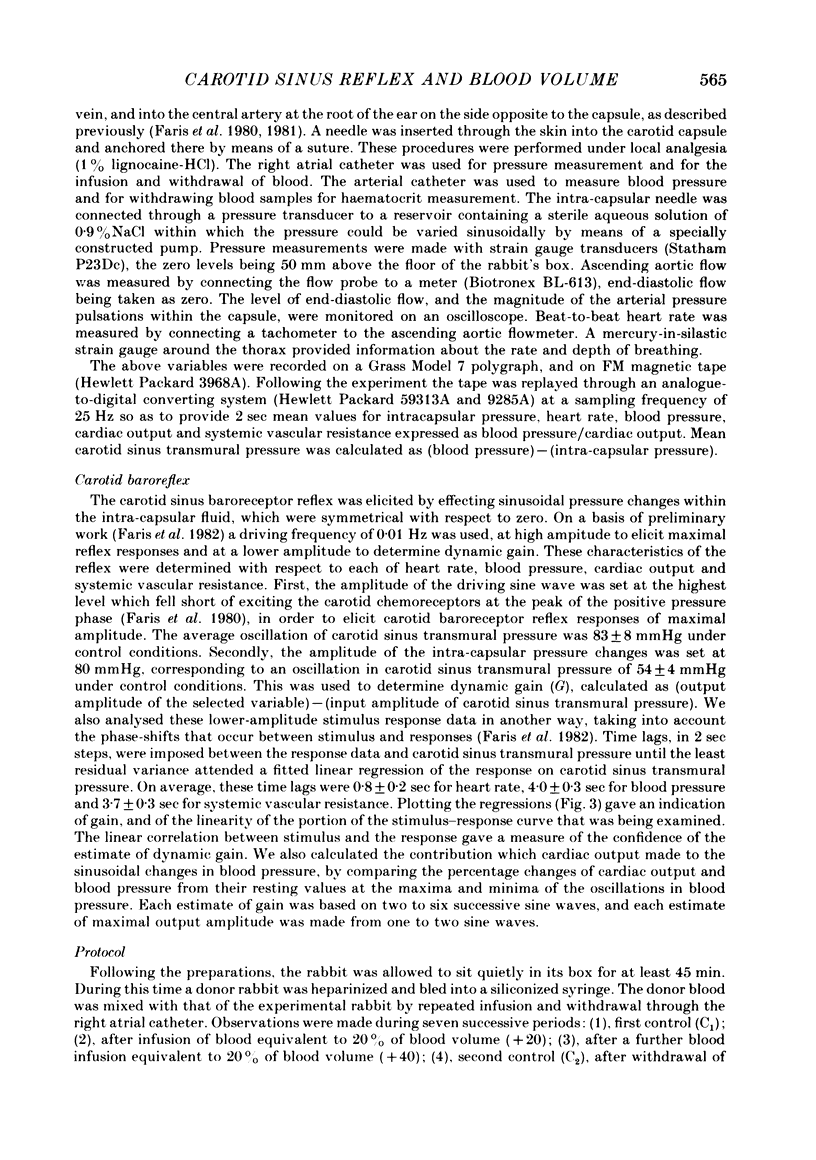
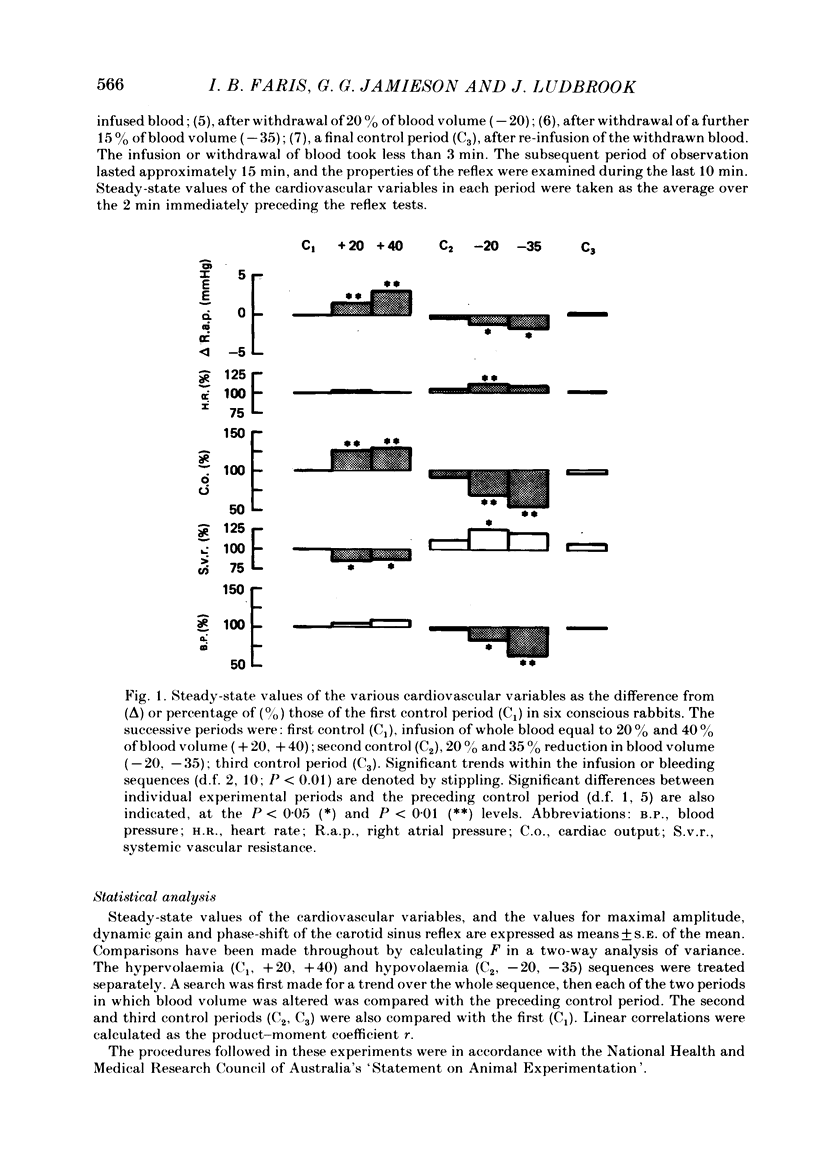
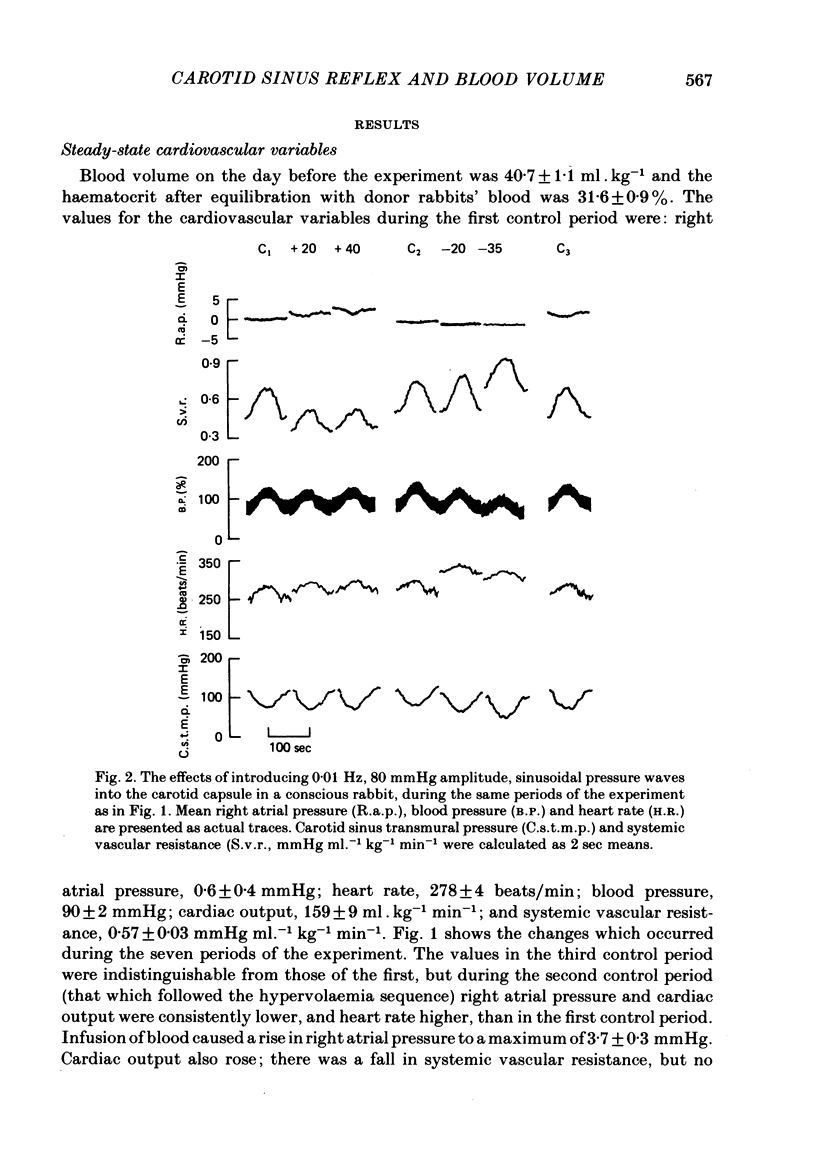
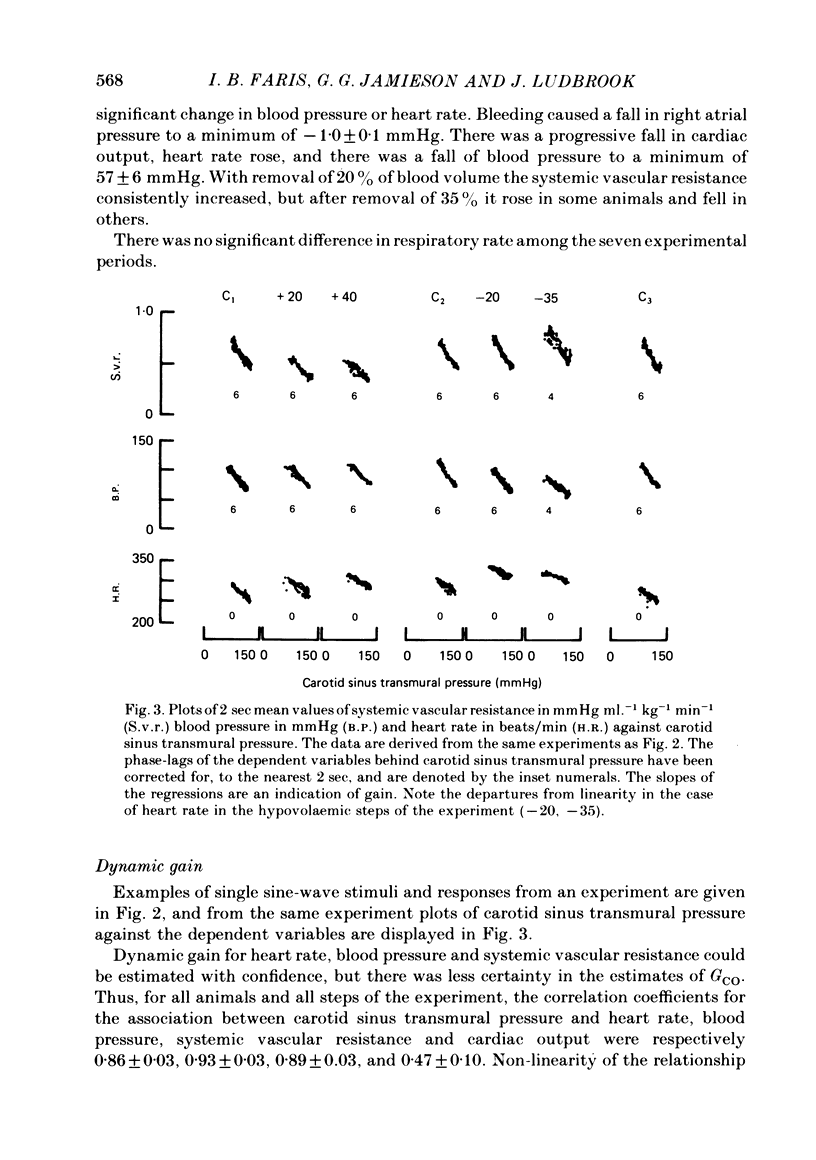
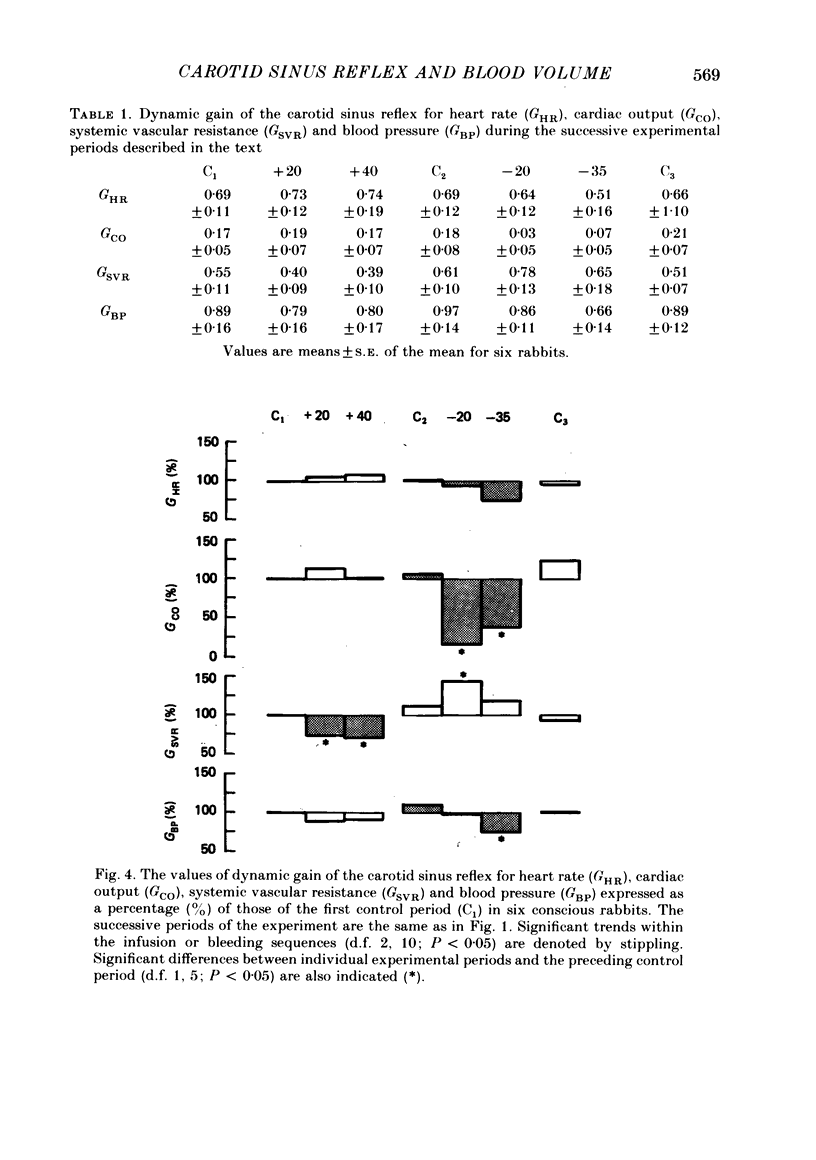
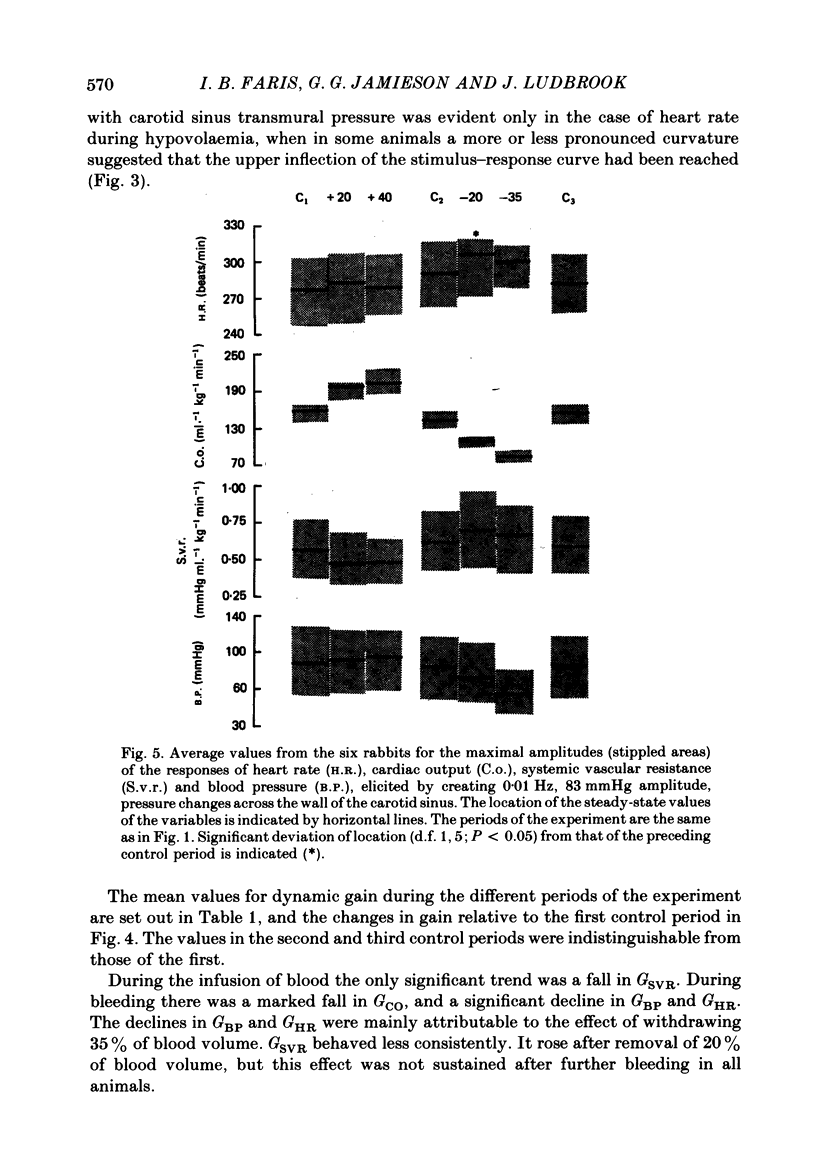
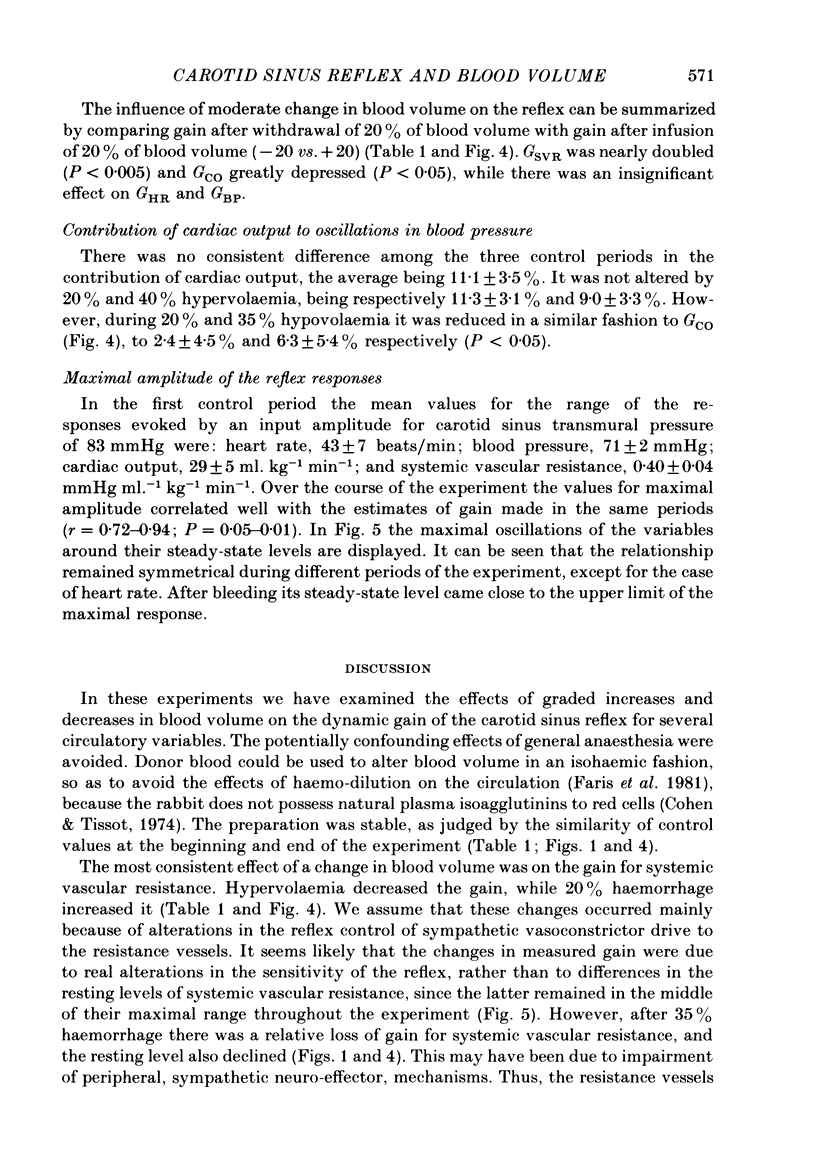
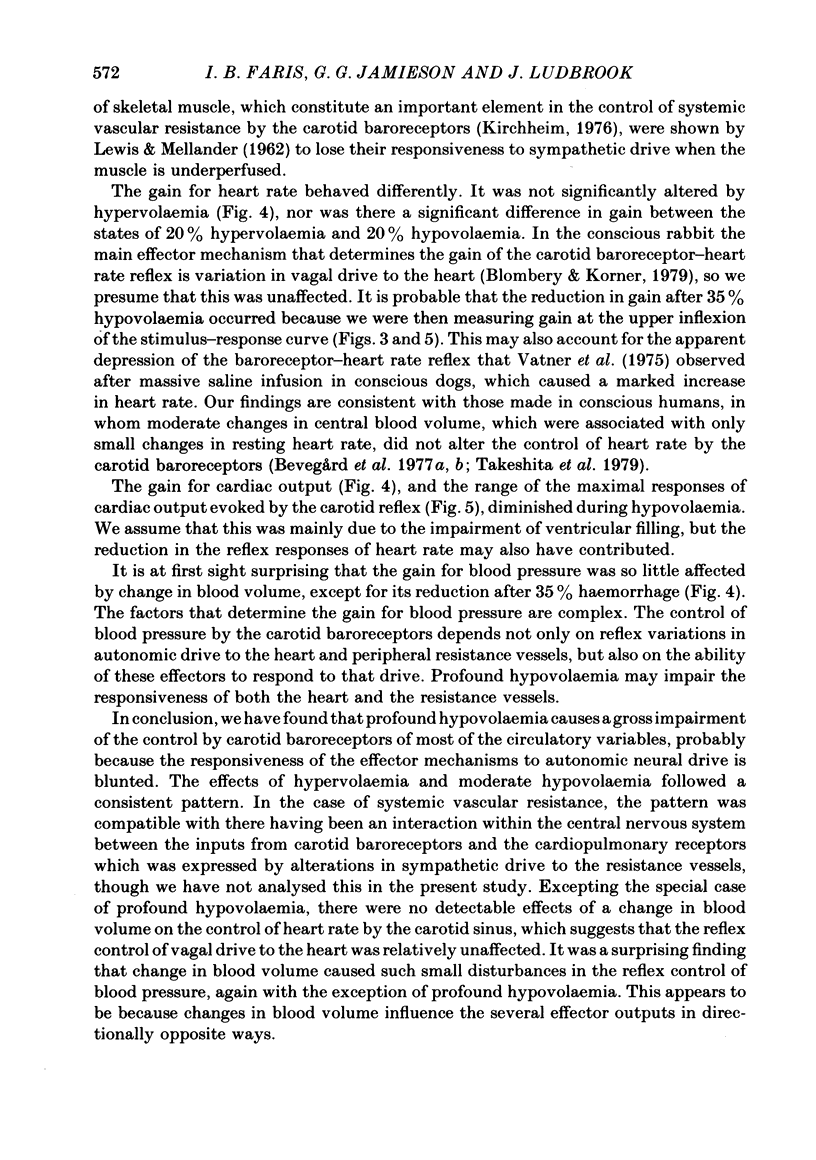

Selected References
These references are in PubMed. This may not be the complete list of references from this article.
- Bevegård S., Castenfors J., Lindblad L. E. Effect of carotid sinus stimulation on cardiac output and peripheral vascular resistance during changes in blood volume distribution in man. Acta Physiol Scand. 1977 Sep;101(1):50–57. doi: 10.1111/j.1748-1716.1977.tb05982.x. [DOI] [PubMed] [Google Scholar]
- Bevegård S., Castenfors J., Lindblad L. E., Tranesjö J. Blood pressure and heart rate regulating capacity of the carotid sinus during changes in blood volume distribution in man. Acta Physiol Scand. 1977 Mar;99(3):300–312. doi: 10.1111/j.1748-1716.1977.tb10383.x. [DOI] [PubMed] [Google Scholar]
- Billman G. E., Dickey D. T., Teoh K. K., Stone H. L. Effects of central venous blood volume shifts on arterial baroreflex control of heart rate. Am J Physiol. 1981 Oct;241(4):H571–H575. doi: 10.1152/ajpheart.1981.241.4.H571. [DOI] [PubMed] [Google Scholar]
- Blombery P. A., Korner P. I. Relative contributions of aortic and carotid sinus baroreceptors to the baroreceptor-heart rate reflex of the conscious rabbit. J Auton Nerv Syst. 1979 Dec;1(2):161–171. doi: 10.1016/0165-1838(79)90014-6. [DOI] [PubMed] [Google Scholar]
- Chen H. I., Chai C. Y., Tung C. S., Chen H. C. Modulation of the carotid baroreflex function during volume expansion. Am J Physiol. 1979 Aug;237(2):H153–H158. doi: 10.1152/ajpheart.1979.237.2.H153. [DOI] [PubMed] [Google Scholar]
- Donald D. E., Shepherd J. T. Reflexes from the heart and lungs: physiological curiosities or important regulatory mechanisms. Cardiovasc Res. 1978 Aug;12(8):446–469. [PubMed] [Google Scholar]
- Faris I. B., Iannos J., Jamieson G. G., Ludbrook J. The carotid sinus baroreceptor reflex in conscious rabbits. J Physiol. 1980 Jan;298:321–331. doi: 10.1113/jphysiol.1980.sp013083. [DOI] [PMC free article] [PubMed] [Google Scholar]
- Faris I. B., Iannos J., Jamieson G. G., Ludbrook J. The circulatory effects of acute hypervolemia and hemodilution in conscious rabbits. Circ Res. 1981 Jun;48(6 Pt 1):825–834. doi: 10.1161/01.res.48.6.825. [DOI] [PubMed] [Google Scholar]
- Faris I. B., Jamieson G. G., Ludbrook J. Static versus dynamic techniques for characterizing the carotid sinus baroreceptor reflex in conscious rabbits. Clin Exp Pharmacol Physiol. 1982 Jan-Feb;9(1):57–68. doi: 10.1111/j.1440-1681.1982.tb00779.x. [DOI] [PubMed] [Google Scholar]
- Hosomi H., Baba M., Morita H. Time-dependent changes in open-loop gains of baroreflex systems after massive hemorrhage. Jpn J Physiol. 1981;31(5):705–715. doi: 10.2170/jjphysiol.31.705. [DOI] [PubMed] [Google Scholar]
- Kirchheim H. R. Systemic arterial baroreceptor reflexes. Physiol Rev. 1976 Jan;56(1):100–177. doi: 10.1152/physrev.1976.56.1.100. [DOI] [PubMed] [Google Scholar]
- Mancia G., Shepherd J. T., Donald D. E. Interplay among carotid sinus, cardiopulmonary, and carotid body reflexes in dogs. Am J Physiol. 1976 Jan;230(1):19–24. doi: 10.1152/ajplegacy.1976.230.1.19. [DOI] [PubMed] [Google Scholar]
- Paintal A. S. Vagal sensory receptors and their reflex effects. Physiol Rev. 1973 Jan;53(1):159–227. doi: 10.1152/physrev.1973.53.1.159. [DOI] [PubMed] [Google Scholar]
- Stinnett H. O., Bishop V. S., Peterson D. F. Reduction in baroreflex cardiovascular responses due to venous infusion in the rabbit. Circ Res. 1976 Dec;39(6):766–772. doi: 10.1161/01.res.39.6.766. [DOI] [PubMed] [Google Scholar]
- Takeshita A., Mark A. L., Eckberg D. L., Abboud F. M. Effect of central venous pressure on arterial baroreflex control of heart rate. Am J Physiol. 1979 Jan;236(1):H42–H47. doi: 10.1152/ajpheart.1979.236.1.H42. [DOI] [PubMed] [Google Scholar]
- Thorén P. Role of cardiac vagal C-fibers in cardiovascular control. Rev Physiol Biochem Pharmacol. 1979;86:1–94. doi: 10.1007/BFb0031531. [DOI] [PubMed] [Google Scholar]
- Vatner S. F., Boettcher D. H., Heyndrickx G. R., McRitchie R. J. Reduced baroreflex sensitivity with volume loading in conscious dogs. Circ Res. 1975 Aug;37(2):236–242. doi: 10.1161/01.res.37.2.236. [DOI] [PubMed] [Google Scholar]


